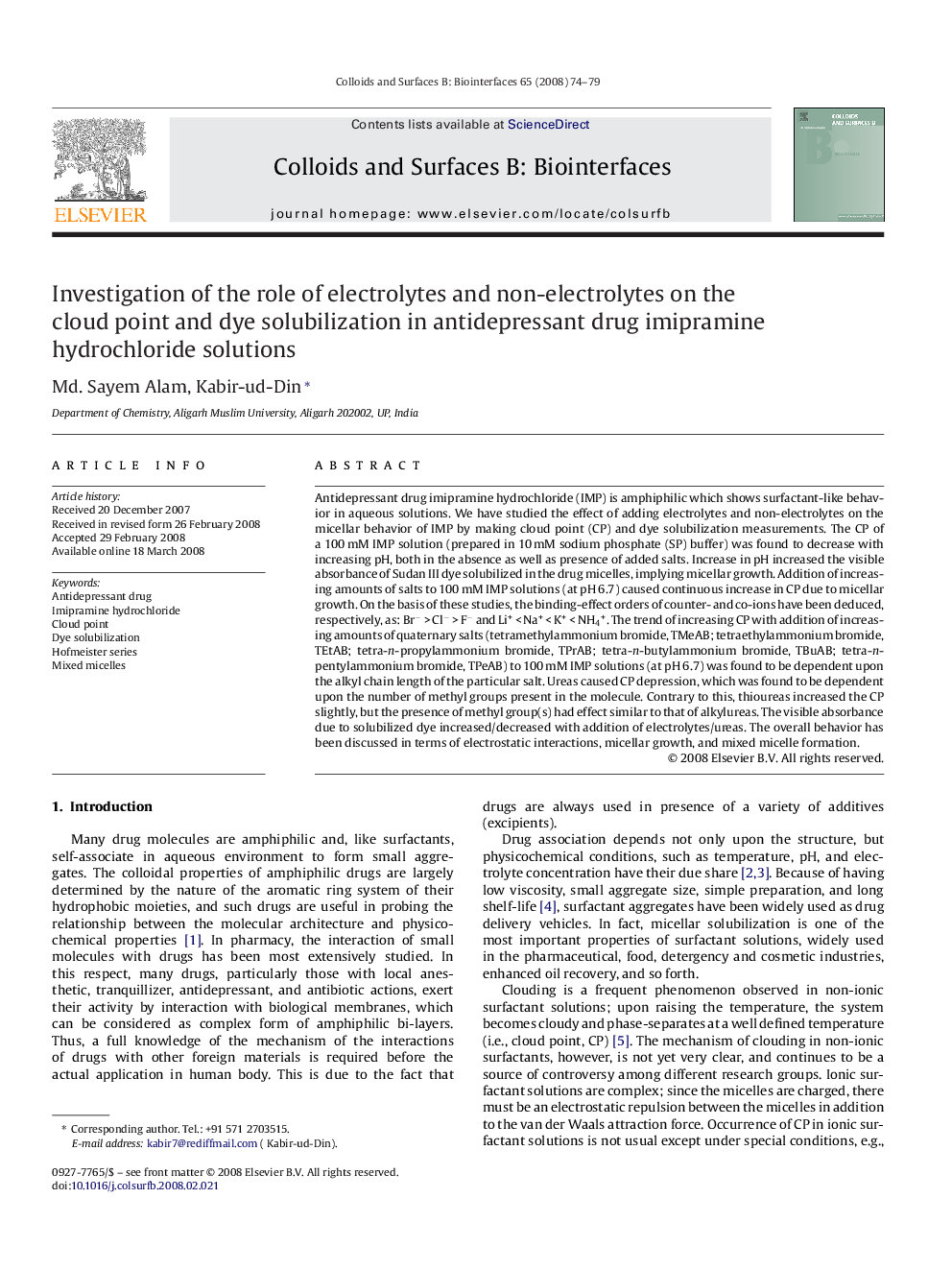| Article ID | Journal | Published Year | Pages | File Type |
|---|---|---|---|---|
| 602818 | Colloids and Surfaces B: Biointerfaces | 2008 | 6 Pages |
Antidepressant drug imipramine hydrochloride (IMP) is amphiphilic which shows surfactant-like behavior in aqueous solutions. We have studied the effect of adding electrolytes and non-electrolytes on the micellar behavior of IMP by making cloud point (CP) and dye solubilization measurements. The CP of a 100 mM IMP solution (prepared in 10 mM sodium phosphate (SP) buffer) was found to decrease with increasing pH, both in the absence as well as presence of added salts. Increase in pH increased the visible absorbance of Sudan III dye solubilized in the drug micelles, implying micellar growth. Addition of increasing amounts of salts to 100 mM IMP solutions (at pH 6.7) caused continuous increase in CP due to micellar growth. On the basis of these studies, the binding-effect orders of counter- and co-ions have been deduced, respectively, as: Br− > Cl− > F− and Li+ < Na+ < K+ < NH4+. The trend of increasing CP with addition of increasing amounts of quaternary salts (tetramethylammonium bromide, TMeAB; tetraethylammonium bromide, TEtAB; tetra-n-propylammonium bromide, TPrAB; tetra-n-butylammonium bromide, TBuAB; tetra-n-pentylammonium bromide, TPeAB) to 100 mM IMP solutions (at pH 6.7) was found to be dependent upon the alkyl chain length of the particular salt. Ureas caused CP depression, which was found to be dependent upon the number of methyl groups present in the molecule. Contrary to this, thioureas increased the CP slightly, but the presence of methyl group(s) had effect similar to that of alkylureas. The visible absorbance due to solubilized dye increased/decreased with addition of electrolytes/ureas. The overall behavior has been discussed in terms of electrostatic interactions, micellar growth, and mixed micelle formation.
